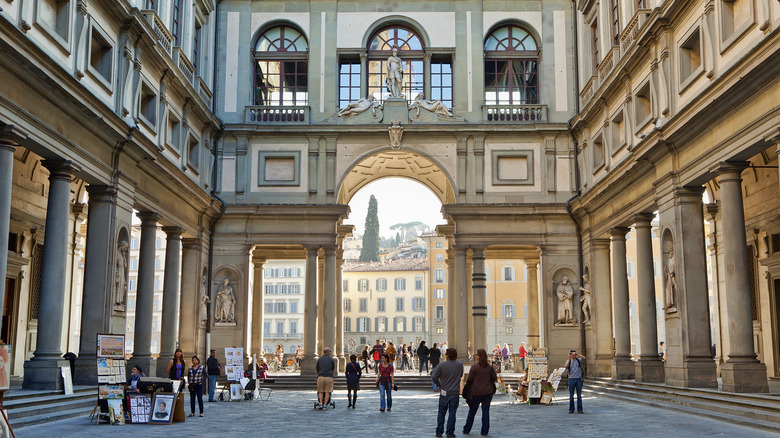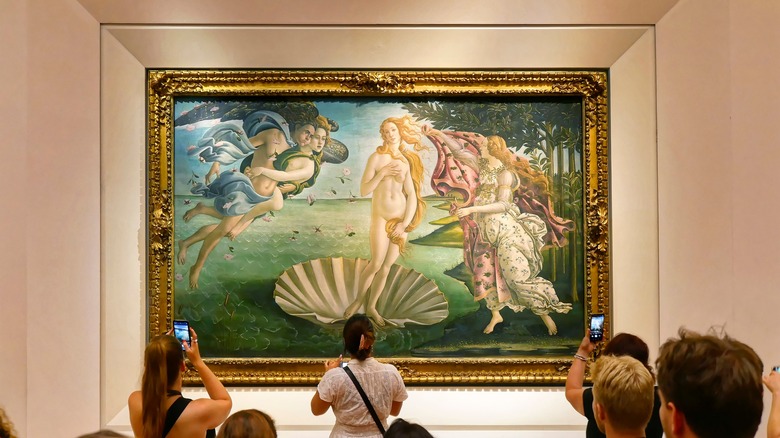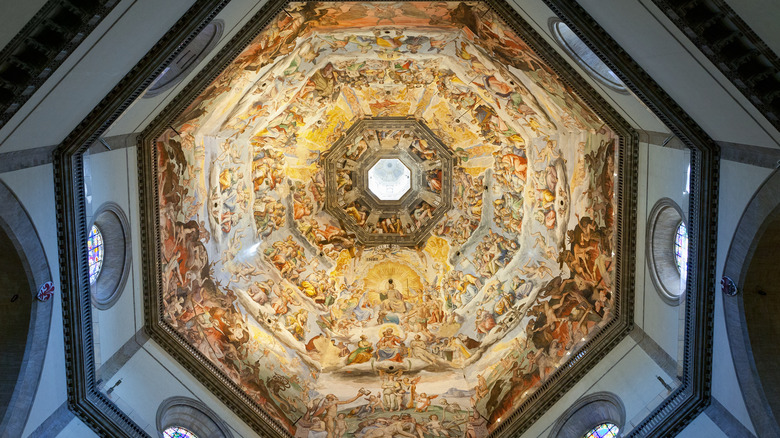The Most Walkable City In The World Is This Art-Filled Historic Gem In Italy
Italy is unmistakably known for its picturesque beaches, unrivaled wine, culinary feats, historic towns, and architecture. One notable city happens to have been founded as a Roman military colony by none other than Julius Caesar and can trace its origins all the way back to 59 BC. The city of Florence is considered the most walkable city in the world, according to the finance website Insider Monkey. The city center itself was designated a UNESCO World Heritage site in 1982. It's also a city where hitting your daily step count is effortless. The city's original name, Florentia, translates to "flourishing," quite an apt moniker for a city that can see anywhere from 10 to 16 million tourists annually.
European travel expert Rick Steves says the best time to visit Italy is during the shoulder seasons, and the capital of Tuscany is no exception. A trip during the spring is ideal for catching sights of blossoming flowers and spectacular Easter celebrations. If you visit in the fall, you'll be able to experience shorter lines at museums, seasonal delicacies like white truffles, and autumn leaves. Just north of Florence is Foreste Casentinesi, one of the best destinations in Italy to see fall foliage.
Iconic museums in Florence
Florence has upwards of 72 art-centric sites to see, including private collections, official museums, offbeat galleries, and churches. This is an unsurprising stat, considering Florence is known as the birthplace of the European Renaissance. While many museums are classic mainstays with centuries-old artwork, like the Uffizi Gallery, there are also more modern museums that have unique focuses, like the Costume Gallery.
There are several can't-miss attractions in Florence, including the previously mentioned Uffizi Gallery. The art center sits on the bank of the Arno River and was commissioned by Cosimo di Medici, a member of an iconic Florentine banking family, in the mid-16th century. Before you enter the Uffizi, you'll find the Loggia Signoria, an open-air sculpture gallery featuring formidable works of art, like Benvenuto Cellini's "Perseus," where the titular character is holding the head of Medusa. Inside, you'll set your sights on more chiseled sculptures and ethereal paintings like Sandro Botticelli's "The Birth of Venus," Caravaggio's "Bacchus," or countless other pieces from artistic masters like Leonardo da Vinci and Michelangelo. Tickets for the Uffizi can be booked online, and children under 18 years old, students, and teachers can enter for free.
Michelangelo's soaring marble statue of "David" is one that's known around the world. To spot the original, head to Florence's own Galleria dell'Accademia, which is only a 15-minute walk from Uffizi (it is the world's most walkable city after all). While "David" is impressive enough on its own, the gallery boasts the largest number of Michelangelo sculptures in the world.
Don't sleep on Florence's Duomo
The Cathedral of Santa Maria del Fiore is a major focal point of Florence's city center, and its dome is a defining characteristic of the postcard-worthy skyline. It's free to enter, but remember that it is a solemn place of worship. The cathedral boasts 44 stained glass windows, marble mosaic floors, towering neo-Gothic arches, and countless religious artworks crafted by Italian painters and sculptors.
The adjoining massive octagonal dome, covered in terracotta tiles on the outside and the iconic "The Last Judgment" fresco on the inside, was built in the mid-15th century by Filippo Brunelleschi. Also connected to the cathedral is Giotto's bell tower, which can be reached by climbing 414 steps to the top. The reward? Breathtaking views of Florence. The Opera del Duomo Museum spans three floors and nearly 64,583 square feet, containing classic works ranging from Michelangelo to Donatello. To visit the dome, tower, museum, baptistery, and Basilica of Santa Reparata within the Piazza del Duomo, consider purchasing the Bruneschelli Pass.


